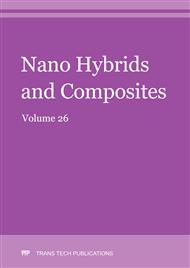p.1
p.8
p.20
p.30
p.45
p.62
p.84
p.93
On the Matano Plane Position in Multicomponent Diffusion Couples
Abstract:
Even though several methods of diffusion analysis avoid a necessity for the Matano plane determination, the Matano plane locations are of interest in the multicomponent couples and when tracer experiments are performed. The positions of the Matano plane calculated from the concentration profiles should be exactly the same. However, due to experimental errors, the results can differ significantly. In the paper we consider Matano plane for multi-component couples of conserved and non-conserved overall volumes. We use Darken method and Sauer-Freise scheme, respectively and show that looking for the Matano plane as an inverse problem leads to a system of linear algebraic equations which are over-determined. The relations for the Matano plane position are derived by virtue of the least-squares methodology. The exemplary computations shows that the method is particularly useful in analysis of experimental data and allows decreasing computing errors.
Info:
Periodical:
Pages:
20-29
Citation:
Online since:
August 2019
Keywords:
Price:
Сopyright:
© 2019 Trans Tech Publications Ltd. All Rights Reserved
Share:
Citation:


